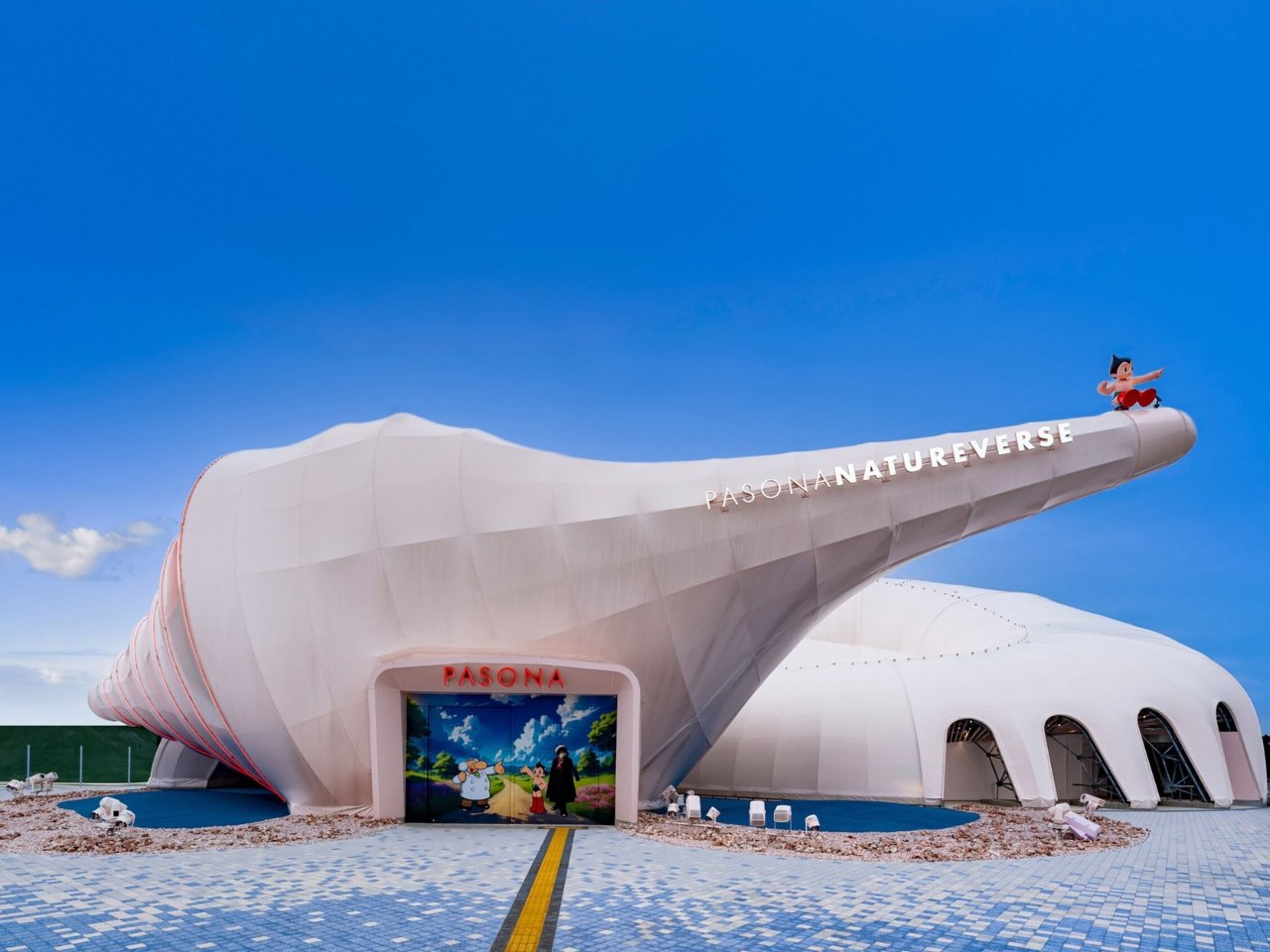There’s something magical about watching an ancient fossil come to life as a building. That’s exactly what happens when you encounter the Pasona Natureverse Pavilion at Expo 2025 Osaka, where local architecture studio The Design Labo has created something truly extraordinary.
The shell of a prehistoric marine mollusc informed the spiral shape of this remarkable pavilion, designed for staffing company Pasona Group. Picture this: a 43-meter-wide structure that looks like a giant ammonite shell gracefully unfurled on the ground, accompanied by a smaller conch-like companion crowned with a sculpture of cartoon character NEO Astro Boy.
Designer Name: The Design Labo
The architects didn’t just borrow the shape; they captured the very essence of these prehistoric marine creatures. CEO Satoshi Itasaka explains the deeper meaning beautifully: “Coiled shells have changed little for roughly 400 million years. Having survived repeated mass extinctions without being eliminated, they may represent a ‘completed form’ of life.” Since the Expo’s theme is life, they adopted the coiled shell as its symbol and conceived a pavilion where visitors can experience the connection between humans and nature and the continuity of life. It’s not just about creating a striking visual; it’s about storytelling through architecture that spans geological time.
What makes this pavilion truly special is how it works with nature rather than against it. The building features an ingenious water-based cooling system that coats the skin of the structure in a thin film of water to reduce the need for air conditioning. The spiral form acts as a means of collecting and reusing both this water and rainwater, which is recirculated as grey water throughout the building. The interior journey is equally thoughtful. The pavilion comprises two shell-shaped structures containing a series of interactive exhibition spaces that explore physical, mental and social health. Visitors spiral through three distinct zones titled History of Life, Body and Mind/Bonds, each containing a range of interactive and digital displays.
Among the fascinating exhibits is a tree-shaped sculpture that depicts the history of evolution and a lab-grown heart created through biomaterials and bioengineering. “Within this grand volume, visitors encounter dynamic moving LED boxes, a zone where they can see a heart created from iPS cells, and an area offering a glimpse into the world of soil microorganisms,” Itasaka explains, describing content that combines surprise with learning.
But here’s where the story gets even better. This isn’t just a temporary exhibition building destined for demolition. The 43-meter-wide pavilion is designed to be easily demountable, created using a ball-jointed steel structure over which a synthetic white membrane has been stretched. After the expo, it will be permanently relocated to Awaji Island to serve as a cultural center, giving the building a meaningful second life.
The pavilion transforms dramatically after dark, when strips of color-changing lighting along the shell’s ridges illuminate the structure, enhanced by projected light effects. It becomes a glowing beacon that looks almost alive, pulsing with soft light that makes the spiral form even more mesmerizing. What strikes me most about this project is how it demonstrates that sustainable design doesn’t have to be boring or purely functional. The Design Labo has created something that’s environmentally responsible while being emotionally resonant. “We were reminded that biomimetic forms are not only structurally stable but also inherently beautiful,” Itasaka notes.
This pavilion represents something bigger than just clever architecture. It’s a meditation on time, evolution, and our place in the natural world. By taking inspiration from creatures that survived for millions of years, the designers have created a space that feels both humbling and hopeful. Sometimes, buildings often feel disconnected from their environment but the Pasona Natureverse Pavilion shows us another way forward. It’s architecture that tells a story, respects the planet, and creates genuine wonder. That’s the kind of design our future needs more of.
The post Japan Just Built a Glowing Pavilion Shaped Like a 400M-Year-Old Shell first appeared on Yanko Design.

